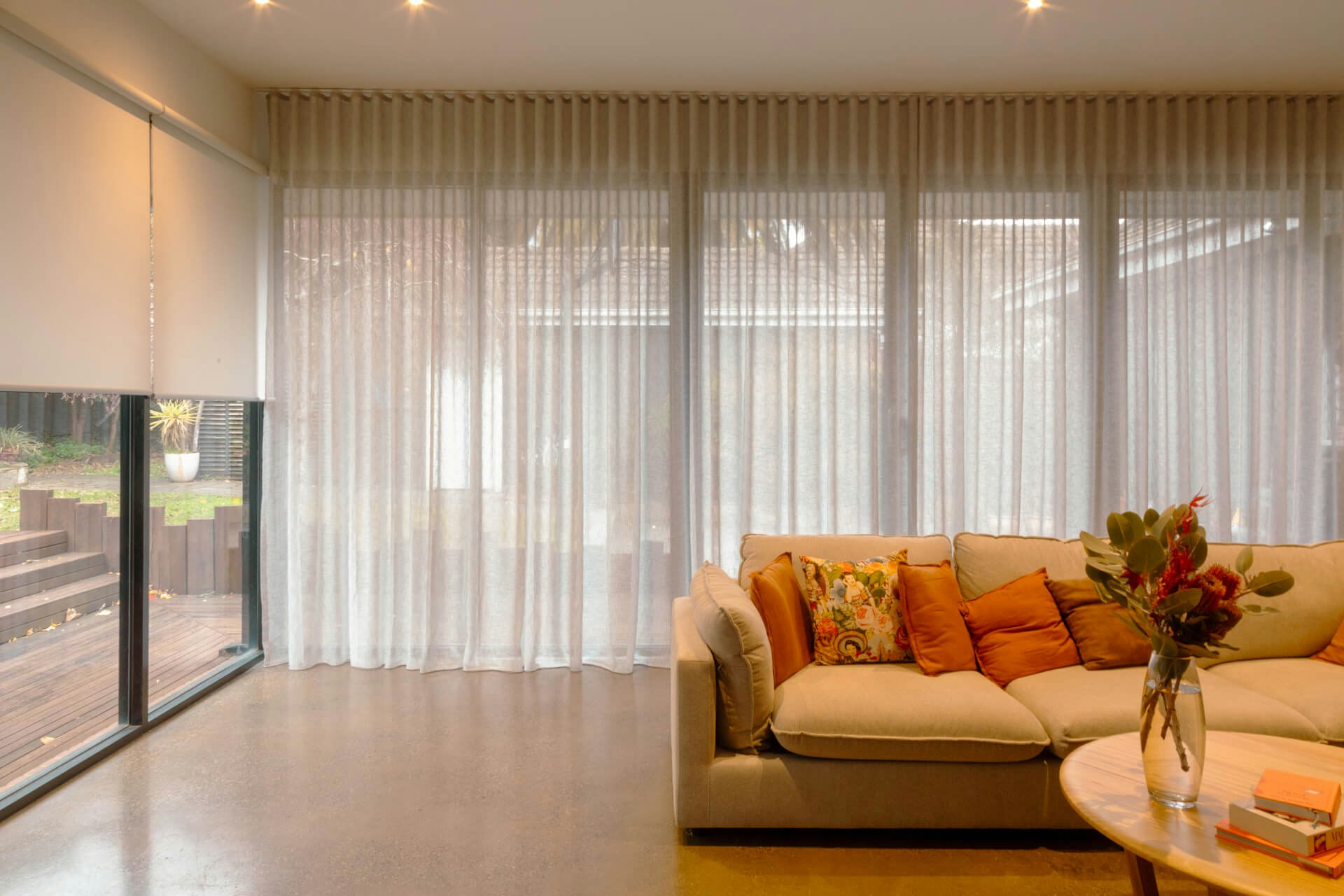What’s the difference between face fit and recess fit roller blinds?

So, what’s the difference? Well, it’s all about how they’re put up. A face fit (or outside mount) blind is installed onto the front of the window frame, usually covering both the glass and the frame and maybe even a bit of the wall. On the flip side, a recess fit blind is installed right inside the window frame, covering the glass only. You might also hear recess fit being called inside fit or inside mount.
Why should you care about this difference? If you go for a face fit roller blind, your blinds are going to be wider since they cover the whole frame along with the glass. So, it’s super important to think about how you’re going to hang them before you whip out the tape measure or place that order.
Benefits of face fit roller blinds
When you team a face fit installation up with a back roll blind, it’s a stellar option for bedrooms where you want to keep the light in check. This combo makes sure every bit of the window is covered, reducing those pesky light gaps.
Benefits of recess fit roller blinds
Recess roller blinds sit snugly in the window frame, which means they don’t stick out into the room much, or at all if the frames are deep. They have a sharp look, but just a heads up: they might leave a tiny bit of space at the edge of the window, allowing some light to sneak in, compared to a face fit setup.
Combining a recess fit and a face fit
Mixing face fit and recess fit blinds is a savvy move if you want some versatility. Using both sunscreen roller blinds and blockout roller blinds gives you the best of both worlds. The sunscreen blind works best as a recess fit inside the window providing daytime privacy, while the blockout blind with a face fit installation offers serious light-blocking power.
How to order your blinds
Now that you know the difference, you can order your free samples, measure up using our how to measure guides, and then order your made-to-measure roller blinds from Shadey.




